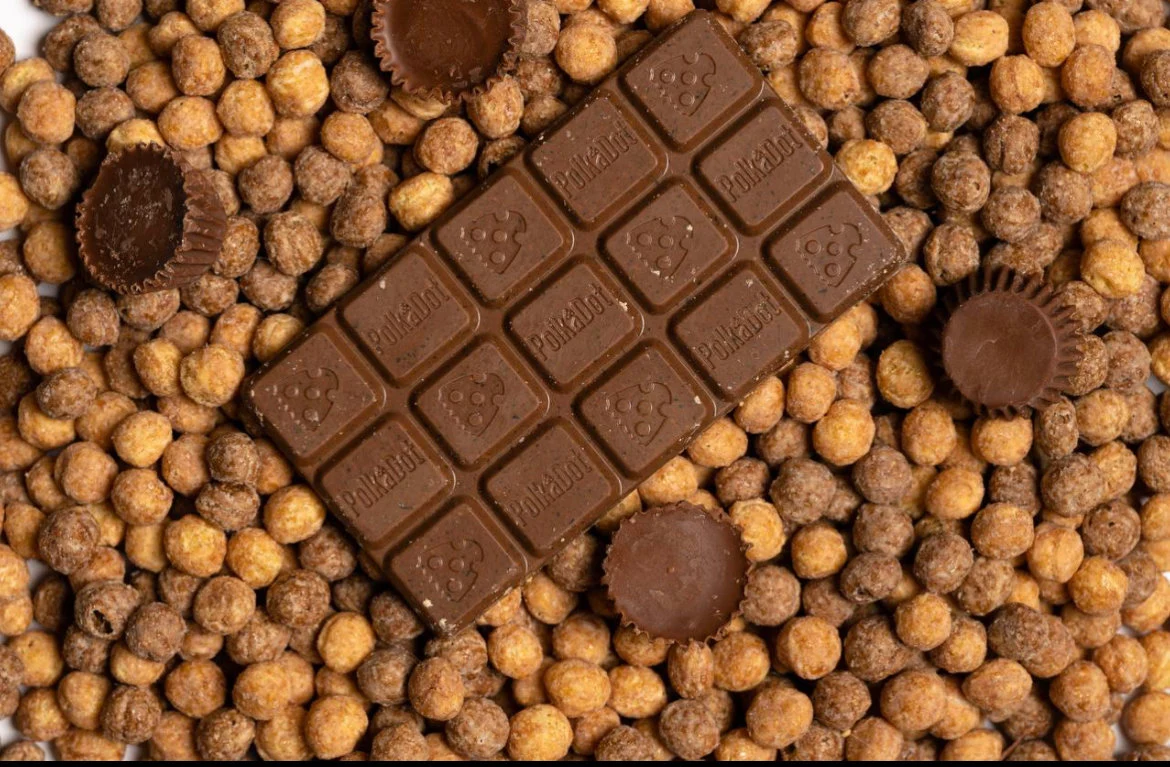There’s a lot of talk lately about POLKA DOT MUSHROOM BARS, and the ways it might be a benefit – or detriment – to our health. Just how is chocolate good for us, and what kinds should we use?- very bad for those trying to slim down.) Organic chocolate also goes one-up, using cocoa beans and sugar grown without chemicals.
Cacao-derivative products have been delicacies and the treats of royalty for centuries, as both drink and food. But it’s only in recent years that they have been recognized by science as having distinctly healthy effects. As a chocolate lover, I have been pleased to research the topic and use the information to make chocolate a healthy part of my life. Salud!
What goes into chocolate, and why does it count? As with many foods, the purer the product, the healthier it is for you. The same is true for chocolate. A basic chocolate bar has several main ingredients:The beans contain large amounts of phytochemicals called flavonoids, compounds that are found almost exclusively in the plant kingdom.
Which part is good for you? It’s the cocoa mass, the chocolate bean itself, which is a good source of fiber and one of the most powerful anti-oxidant foods in the world. That means, the darker, the better. Most chocolate bars now say what percentage is cocoa mass, like thus: 0% for white “chocolate” (cocoa butter), 10% – 25% for milk chocolate, 30% for semi-sweet, 50% for bittersweet, 70% for dark, and of course 100% for pure chocolate.
Go for those higher percentages – the lean, dark, hard stuff. (With no cocoa in it at all, white chocolate is obviously the poorest choice for those seeking to lose weight or get healthy – it’s all sugar and fat.) Many chocolate bars also have other ingredients: egg, milk, honey, artificial flavors, vanilla, spices. Almonds, walnuts and even peanuts are nutritious additives for you non-allergic, nut-loving types. But be wary of other things found in typical candy bars, like nougat, toffee or caramel, especially in large amounts – it’s mostly just sugar and fat!
There’s one final consideration: how the cocoa bean powder was processed. If possible, choose chocolate that is unprocessed, or was processed without alkali. Why? An alkaline process, also known as the “dutch process”, destroys 95% of the health benefits of cocoa. Yikes! So, dark chocolate this way is like pure apple juice that’s been pasteurized – still beneficial, but now lacking most of its enzymes and heat-sensitive vitamins. (A Mars Bar would be like a 1% fruit juice “drink” or soda
In an age where heart disease is perhaps the top killer of people in the U.S. today, it’s heartening to discover that chocolate in the right form is exceedingly good for – the heart! How so? First, let’s look at where chocolate comes from. Chocolate and cocoa powders are a plant product, derived from the beans of the cacao tree.
It’s estimated that there are more than four thousand of them! These chemicals are found not only in cocoa, but also in fruits, vegetables, tea and wine. Various epidemiological studies have shown that populations consuming a diet rich in flavonoids, including moderate amounts of wine, tea and certain fruits and vegetables, have lower rates of heart disease and stroke.
This is one reason why eating plenty of fresh foods is important. The specific flavonoids in chocolate receiving the most interest are called procyanidins, which are also present in apples and grapes. Both tea and red wine contain flavonoids called catechins, and it is these that can bind together to make the larger molecules called procyanidins, which are present in the cocoa bean.


